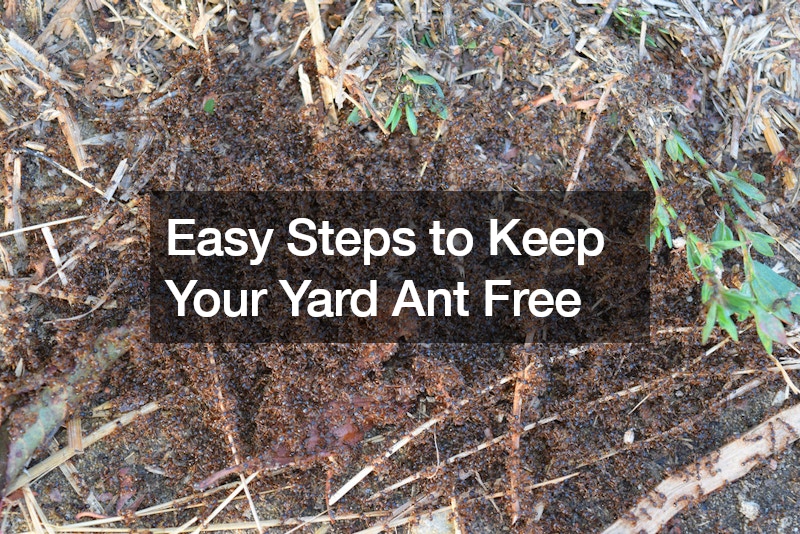Maintaining a yard free of ants, especially biting ants and fire ants, can greatly improve your outdoor experience. Fortunately, effective ant control can be achieved through a few simple steps. This guide will help you establish a long-term solution to keep your yard ant-free.
Step 1: Establish a Defensive Barrier
The first step in effective ant control is to create a defensive barrier around your yard. This can be done by using insect-killing lawn granules made from synthetic pyrethroids.
These granules act as contact killers for most insects, including ants. By spreading these granules around your lawn, you can deter scout ants from settling in your yard.
Understanding Synthetic Pyrethroids
Synthetic pyrethroids are chemical compounds designed to mimic the insecticidal properties of natural pyrethrins, which are derived from chrysanthemum flowers. Unlike natural pyrethrins, synthetic versions are engineered to be more stable and long-lasting. This means they remain effective for an extended period, providing ongoing protection against ants and other pests.
Application Tips:
Timing:
- Initial Application: Apply the granules in late winter or early spring when insects begin to become active. This timing is crucial because it coincides with the period when ants and other pests start to emerge from dormancy and look for new nesting sites.
- Subsequent Applications: Reapply in early summer to maintain the barrier as the insect activity peaks. For areas with long growing seasons or persistent ant problems, a third application in the fall may be necessary to ensure continued protection as the temperatures drop and insects seek shelter.
Placement:
- Lawn Application: Spread the granules evenly across your lawn using a broadcast spreader. This equipment ensures uniform distribution, creating an effective barrier that scout ants will have to cross. As they come into contact with the granules, they are killed before they can establish new colonies.
- Avoid Gardens: Use these granules exclusively on your lawn, not in your garden. While synthetic pyrethroids are effective against pests, they can also harm beneficial insects such as bees, butterflies, and earthworms that are vital for garden health. These beneficial insects play a crucial role in pollination and soil aeration, so preserving their presence in your garden is essential.
Safety Considerations:
- Follow Instructions: Always follow the manufacturer’s instructions for application rates and safety precautions. Overapplication can lead to unnecessary chemical buildup, which might harm non-target organisms and the environment.
- Pet and Child Safety: Keep pets and children away from treated areas until the granules have settled into the soil. Although synthetic pyrethroids are relatively low in toxicity to humans and pets, it’s better to err on the side of caution.
Environmental Impact:
- Water Runoff: Be mindful of water runoff when applying granules near water bodies or during periods of heavy rain. Excessive runoff can carry chemicals into streams, rivers, and lakes, affecting aquatic life. Apply the granules when dry weather is expected to ensure they have time to settle and integrate into the soil.
Step 2: Implement an Offensive Strategy
Even with a strong defensive barrier, some ants may still infiltrate your yard. For these persistent pests, an offensive strategy is essential. Ant bait products are specifically designed to eliminate entire colonies. These baits attract ants, who carry the poison back to their nest, effectively wiping out the colony within 24 hours.
How to Use Ant Baits:
- Placement: Place a teaspoon of the bait near any ant hills you find.
- Timing: The best time to place ant baits is early in the morning when ants are most active.
- Natural Alternatives: If you prefer natural solutions, homemade borax mixtures can be used, although commercial baits are typically more effective and convenient.
Step 3: Long-term Prevention
For long-term ant control, it’s crucial to make your yard less attractive to ants. Ants prefer firm, sandy, well-draining soil for their colonies. By adding organic matter such as compost and mulch, you create a loamy soil that doesn’t hold the structure needed for ant tunnels.
Steps to Transform Your Soil:
- Add Organic Matter: Incorporate compost and mulch into your soil to enrich it with organic matter.
- Use Weed Barriers: Use weed barrier mats in garden walkways to prevent ants from nesting.
- Maintain Regularly: Continuously add organic materials and monitor your yard to ensure it remains unsuitable for ants.
Conclusion
By following these easy steps, you can achieve effective ant control and keep your yard free from these pesky insects. Create a defensive barrier with insect-killing granules, use ant baits to target and destroy colonies, and transform your soil to make it unattractive to ants. With consistent effort and the right strategies, you can enjoy a comfortable, ant-free yard all year round.
For more tips and information on the best products for ant control, explore gardening resources and expert recommendations. Enjoy your beautiful, pest-free yard!
.

